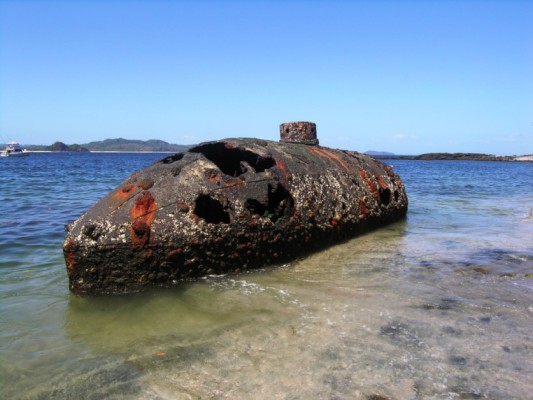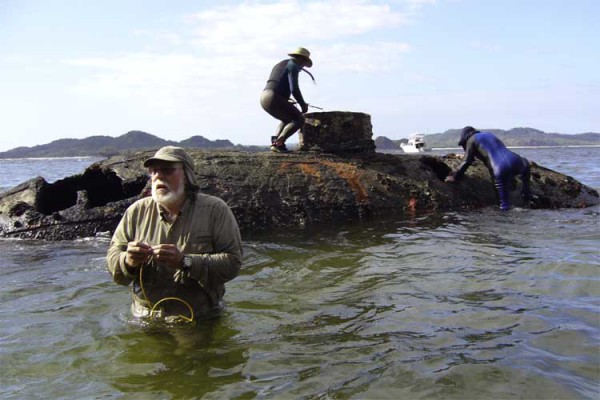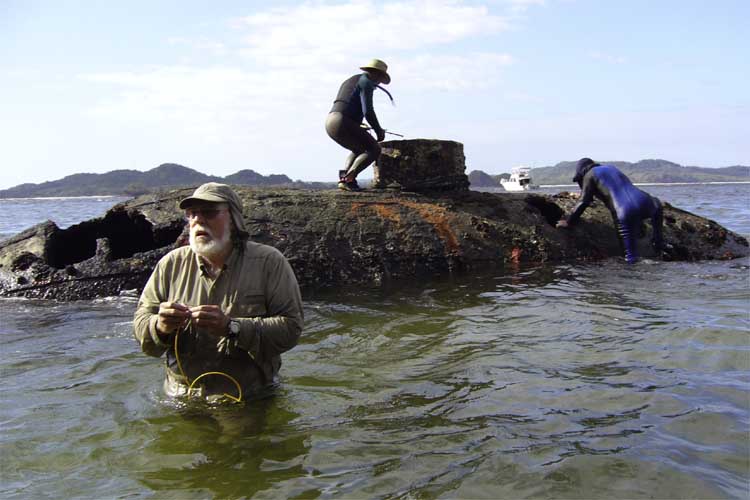Nearly 14 years ago an archeologist and diver, Jim Delgado, found something magnificent. He was on a ship passing the San Telmo Island in Pearl Archipelago, Panama when it occurred to him that the area was known for a sunken Japanese WWII submarine.
Intrigued by the story and the history behind the possible wreck, Delgado wondered about initiating a mission to find it. Luckily, from his ship he saw something towering on the island. It was all rusted out and Delgado felt he had to go investigate.

Delgado managed to find a beached submarine in the area mentioned in the stories he had heard. However, what he did not anticipate was that the submarine was not Japanese, as the stories relate. Nor was it a submarine from WWII – it was much older. Delgado, more intrigued than ever, knew he wanted to investigate the mysterious submarine.

Finding out the name of the submarine took almost two years. A colleague helped Delgado find an old blueprint in a 1902 magazine that had been signed by Julius H. Kroehl, 1864. The magazine stated that there was a wreck around the San Telmo Island and described almost exactly what Delgado found.
Then Delgado found a New York Times article dated 1866 that outlined an event that happened on a New York river. According to the article, Julius Kroehl, who was a German-American who invented one of the first submarines that could be fully submerged and travel under water, had been testing out his ship in the river when it sunk. If this story is true, the sunken submarine is Kroehl’s Sub Marine Explorer.
But if the sunken submarine was Kroehl’s, then why would it be in Panama if it was only tested in a New York river? After more research, Delgado found out that the first trial was actually successful; that the submarine was then taken to Panama to be used for collecting pearls. It is said that the submarine actually lasted a few weeks while collecting pearls, however, something must have gone terribly wrong to leave it rusted out in the middle of an ocean.
The submarine managed to harvest pearls successfully for a while. In 1869 another New York Times article stated that one of the pearl-harvesting missions brought up almost 10 tons of oysters and pearls which estimated about $2,000.
However, all men who had been on the submarine contacted fever and decompression sickness; the vessel was condemned as harmful to the crewmembers’ health. A year after the submarine arrived in Panama, Kroehl himself died from decompression sickness from diving in the submarine. The sub was then taken to the island where it has remained beached ever since. Delgado found it nearly 130 years later.
 source"
title="The submarine's rusting hull was well-known to locals, but they had presumed it to be a remnant of World War II.
source"
title="The submarine's rusting hull was well-known to locals, but they had presumed it to be a remnant of World War II.